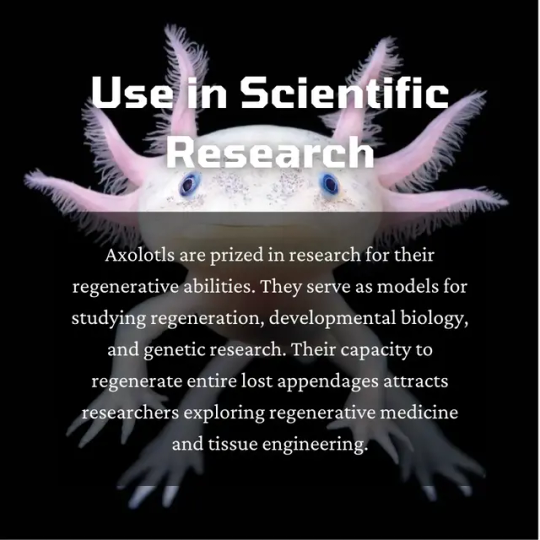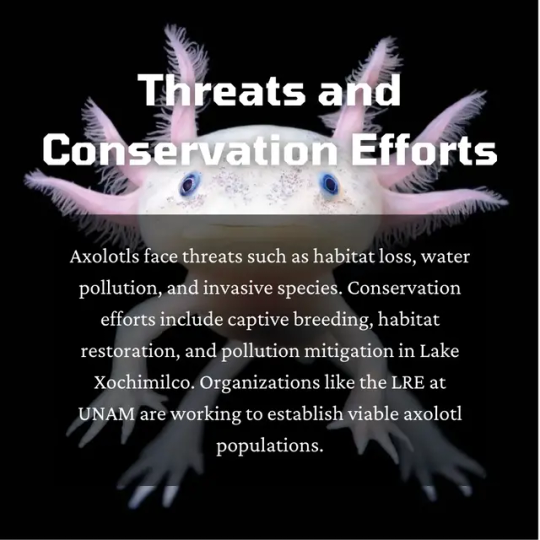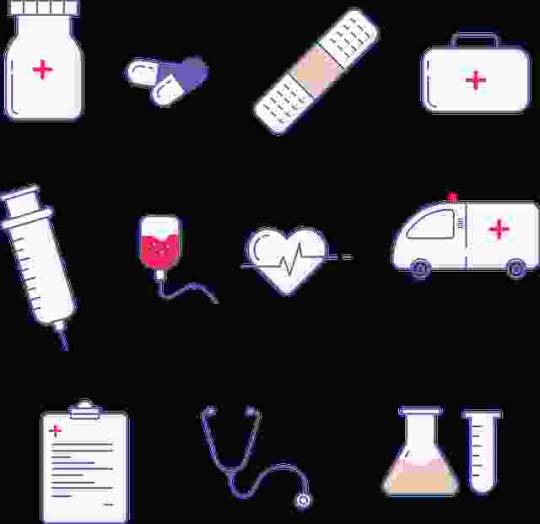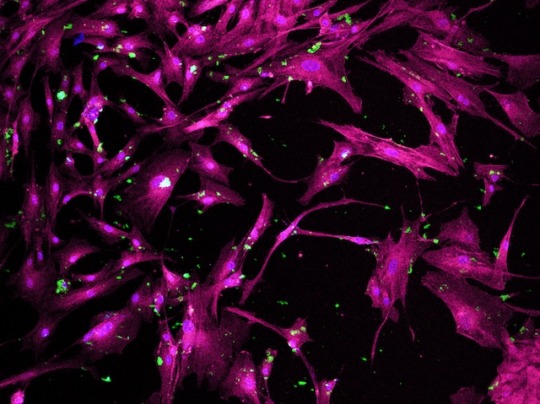#regenerative medicine
Text
A small molecule previously shown to enhance strength in injured or old laboratory mice does so by restoring lost connections between nerves and muscle fibers, Stanford Medicine researchers have found.
The molecule blocks the activity of an aging-associated enzyme, or gerozyme, called 15-PGDH that naturally increases in muscles as they age. The study showed that levels of the gerozyme increase in muscles after nerve damage and that it is prevalent in muscle fibers of people with neuromuscular diseases.
The research is the first to show that damaged motor neurons — nerves connecting the spinal cord to muscles — can be induced to regenerate in response to a drug treatment and that lost strength and muscle mass can be at least partially regained. It suggests that, if similar results are seen in humans, the drug may one day be used to prevent muscle loss of muscle strength due to aging or disease or to hasten recovery from injury.
Continue Reading.
84 notes
·
View notes
Photo





("DEADPOOL Animals Variants: Multiverse, Humorous, Memes, Collectible Art" Classic T-Shirt for Sale by Dunya Baris Cetin gönderdi)
#findyourthing#redbubble#deadpool#marvel#comics#movies#art#design#tshirts#deadpool3#deadpool 3#animal#variants#merc with a mouth#wade wilson#chimichangas#regenerative medicine#merch#deadpool fanart#fanart#funny#graphic#tees#gift#memes#lol#meme#nerd#nerd life#pop
23 notes
·
View notes
Text





This little cutie is all smiles and secrets! Meet the axolotl, the forever-young amphibian with amazing regenerative powers. Read on to unlock their fascinating world! 🌟🐾🔬
#axolotl#regeneration#amphibian#regenerative medicine#endangered#endangered species#endangered animals#biology student#biology facts#sea creatures#biology#zoology#animal#animals#developmental biology#minecraft#science#science facts#education#discover#scicomm#study blog#biology studyblr#study blr#explore#nature#salamander#conservation#gills#simps for science
9 notes
·
View notes
Text
#automated automates automatically automatic#automatic#regenerating#regenerative#medicine#healing#regenerative medicine
17 notes
·
View notes
Video
Drawing Channels
As experimental setups have advanced over time, from 2D cell cultures in dishes to larger 3D structures that mimic the body’s environments, networks of vessels have become essential to get materials to growing cells at the heart of the models. A new study creates this vascular network with a scaffold first drawn with melt electrowriting – a form of microscopic 3D printing – which is submerged in the precursor of a gel. The scaffold swells, and fuses together where elements make contact, to create a predefined network of channels throughout the structure. These vessels (pictured, with a complete layer of functional cells lining the inside of the vessel) can transport essential molecules to cells growing anywhere in the device, helping to both create a viable testing platform for experiments and improve prospects of growing healthy tissues for regenerative medicine.
Written by Anthony Lewis
Video from work by Matthias Ryma and colleagues
University of Würzburg, Würzburg, Germany
Video originally published with a Creative Commons Attribution 4.0 International (CC BY 4.0)
Published in Advanced Materials, May 2022
You can also follow BPoD on Instagram, Twitter and Facebook
#science#biomedicine#3d printing#electrowriting#hydrogels#psychodelic#regenerative medicine#cell culture#lab models#3D lab model#blood vessels#lymphatic vessels
7 notes
·
View notes
Text
Exploring the Rise of Regenerative Health Centers of Florida

In recent years, there has been a notable shift in the healthcare landscape towards a more holistic and proactive approach to wellness. This shift has led to the emergence of regenerative health centers of Florida, which offer innovative treatments and therapies aimed at restoring and optimizing health at the cellular level. As these centers gain popularity and recognition, it's essential to explore the factors driving their rise and the transformative impact they're having on the way we approach healthcare.
The Evolution of Healthcare
Traditional healthcare has typically focused on treating symptoms and managing diseases after they manifest. While this approach has its merits, it often overlooks the underlying factors contributing to illness and fails to address the root cause of health issues. In contrast, regenerative health centers prioritize prevention, restoration, and rejuvenation, aiming to optimize health and vitality through proactive measures rather than reactive treatments.
Know about Regenerative Medicine
At the core of regenerative health centers is the field of regenerative medicine, which harnesses the body's natural healing abilities to repair, regenerate, and restore damaged tissues and organs. This approach utilizes cutting-edge technologies such as stem cell therapy, platelet-rich plasma (PRP) therapy, and other regenerative techniques to stimulate the body's innate healing processes and promote tissue regeneration.
The Rise of Regenerative Health Centers
Several factors have contributed to the rise of regenerative health centers in recent years. One significant factor is the increasing demand for alternative and integrative approaches to healthcare. Patients are seeking alternatives to conventional treatments that offer more personalized, holistic, and sustainable solutions to their health concerns. Regenerative health centers fill this gap by providing comprehensive, patient-centered care that addresses the physical, emotional, and spiritual aspects of health and wellness.
Advancements in Technology and Research
Advancements in medical technology and scientific research have also played a crucial role in driving the growth of regenerative health centers. Breakthroughs in stem cell research, genetic engineering, and biotechnology have paved the way for new and innovative treatments that were once thought to be science fiction. These advancements have expanded the possibilities for regenerative medicine and enabled healthcare providers to offer groundbreaking therapies with unprecedented precision and efficacy.
Holistic Approach to Wellness
Regenerative health centers emphasize a holistic approach to wellness that encompasses not only physical health but also mental, emotional, and spiritual well-being. They recognize the interconnectedness of mind, body, and spirit and strive to address the underlying imbalances that contribute to disease and dysfunction. Through a combination of lifestyle interventions, nutritional support, stress management techniques, and regenerative therapies, these centers empower individuals to take control of their health and live vibrant, fulfilling lives.
Conclusion
The rise of regenerative health centers of Florida represents a paradigm shift in the way we think about healthcare. By focusing on prevention, restoration, and rejuvenation, these centers offer a new model of care that is proactive, personalized, and holistic. As they continue to evolve and expand, regenerative health centers have the potential to revolutionize the healthcare industry and usher in a new era of wellness and vitality for people around the world.
#prptherapy#self care#health#positivity#regenrative medicine#healthcare#motivation#florida#miami beach#regenerative medicine#peptide therapy#stemhealth
0 notes
Text
Midlothian Medical & Sports Center, Midlothian, TX
ABOUT MIDLOTHIAN — MEDICAL & SPORTS CENTER
Welcome to Midlothian Medical and Sports Center, where we are dedicated to revolutionizing how you approach healing.
At Midlothian Medical and Sports Center, we specialize in regenerative medicine, a cutting-edge field focused on harnessing the body’s natural healing abilities. Our mission is to provide comprehensive, non-surgical solutions for soft tissue and joint injuries.
OUR APPROACH
Unlike traditional methods that often rely on surgery and medication, we believe in empowering the body to heal itself. Our team of experienced healthcare professionals combines the latest advancements in regenerative techniques with personalized care to address your unique needs.
Contact us - Midlothian Medical & Sports Center | Midlothian Sports Chiropractic Solutions
Our team of experienced healthcare professionals combines the latest advancements in regenerative techniques with personalized care.
Our clinic offers a range of state-of-the-art regenerative treatments, including stem cell therapy and platelet-rich plasma (PRP) therapy. These therapies are designed to stimulate and accelerate the body’s natural repair processes, promoting tissue regeneration and reducing pain and inflammation.
Comprehensive Care
We understand that each patient is different, and we take the time to create individualized treatment plans tailored to your specific condition and lifestyle. Our holistic approach focuses on alleviating symptoms and addressing the underlying causes of your injury.
https://jpcdn.it/img/7ecebbd275f042949db623e3ab1f628d.jpg
deep tissue laserregenerative medicine
0 notes
Text
Regenerative medicine is a branch of medical science focused on harnessing the body's own regenerative capabilities to repair, replace, or regenerate damaged cells, tissues, or organs. It involves a variety of approaches including stem cell therapy, tissue engineering, and other advanced techniques aimed at restoring normal function in diseased or injured tissues.
The goal is to develop innovative treatments for a wide range of medical conditions, from degenerative diseases to traumatic injuries.
The applications of regenerative medicine are diverse and include:
Tissue Repair and Regeneration: Treating injuries to tissues such as skin, bone, cartilage, muscle, and nerves.
Organ Transplantation: Improving the availability and success of organ transplants through tissue engineering and stem cell therapies.
Treatment of Degenerative Diseases: Addressing conditions like osteoarthritis, Alzheimer's disease, Parkinson's disease, and age-related macular degeneration.
Wound Healing: Accelerating the healing process for chronic wounds, burns, and other skin injuries.
Cardiovascular Regeneration: Repairing damaged heart tissue after heart attacks and promoting angiogenesis for improved blood flow.
Neurological Repair: Restoring function in the central and peripheral nervous systems after injury or disease.
Diabetes Management: Developing insulin-producing cells from stem cells for transplantation in type 1 diabetes patients.
Dental and Craniofacial Regeneration: Regenerating dental tissues, bone, and facial structures for reconstructive purposes.
Cancer Treatment: Using regenerative approaches to repair tissues damaged by cancer treatments like chemotherapy and radiation therapy.
Aging Research: Investigating strategies to slow down or reverse age-related degeneration and promote healthy aging.
These applications demonstrate the potential of regenerative medicine to transform healthcare by offering new treatments and therapies for a wide range of medical conditions.
Get the best treatments for various diseases and full body health checkup at the best hospitals in India.
#health#surgery#knee pain#hip pain#cancer treatment#chemotherapy#radiation therapy#regenerative medicine
0 notes
Text

Innovative Approaches in Regenerative Medicine:
As the field of regenerative medicine progresses, researchers are exploring novel technologies and strategies to advance tissue regeneration and functional recovery. Among these innovations is 3D bioprinting, a technique that allows precise placement of cells, biomaterials, and bioactive substances to construct intricate, hierarchical structures resembling natural tissues and organs. Through the utilization of 3D bioprinting, scientists can produce personalized tissue constructs with meticulous spatial organization and vascularization, addressing the limitations of conventional tissue engineering methods. This innovation holds significant promise across various applications, including organ transplantation, tissue replacement, drug screening, and disease modeling. Additionally, breakthroughs in organoid culture and organ-on-a-chip systems are transforming our ability to replicate human physiology and disease in laboratory settings, offering novel platforms for drug discovery, toxicity testing, and personalized medicine. These miniature organ models faithfully mimic the structure and function of native tissues and organs, providing valuable insights into disease mechanisms and facilitating the development of targeted therapies.
Challenges and Considerations:
Despite the impressive advancements in regenerative medicine, numerous challenges and considerations must be addressed to fully realize its clinical potential. Standardizing protocols for cell production, quality assurance, and scaling up manufacturing to meet clinical demands remains a significant hurdle. Furthermore, navigating regulatory and ethical issues related to the use of stem cells and tissue-engineered products in clinical settings is crucial to ensuring patient safety and upholding ethical standards. Long-term safety and efficacy studies are also imperative to evaluate the sustainability of regenerative therapies over time.
Role of Comprehensive Health Assessments in Regenerative Medicine:
Comprehensive health assessments play a pivotal role in the realm of regenerative medicine, serving as a foundation for patient evaluation, treatment planning, and monitoring of therapeutic outcomes. These assessments encompass a holistic evaluation of an individual's health, including medical history, physical exams, diagnostic tests, imaging studies, and biomarker analyses. By conducting thorough assessments of organ function, tissue integrity, and overall physiological well-being, healthcare providers can identify underlying health conditions, risk factors, and potential contraindications for regenerative therapies. This allows for the customization of treatment plans to meet the specific needs of each patient, optimizing therapeutic outcomes and minimizing risks. Furthermore, regular monitoring of patients undergoing regenerative therapies through comprehensive health assessments enables healthcare providers to evaluate treatment efficacy, safety, and long-term durability. By tracking changes in clinical parameters, biomarkers, and imaging results, healthcare providers can assess treatment response, detect adverse effects or complications, and modify treatment strategies as necessary to enhance patient outcomes.
There are many good hospitals in India that offer health checkup packages for undergoing a regular full body health checkup that play an important role in regenerative medicine.
#regenerative medicine#full body health checkup#health checkup packages#regular health checkups#physical examination#medical history#diagnostic tests#imaging tests#biomarker analysis#organ transplantation#tissue replacement#drug screening#disease modeling#personalized medicine
0 notes
Video
youtube
Why Regenerative Medicine and Stem Cells Are the Future.
0 notes
Text
Mayo Clinic researchers find promise in new potential treatment for liver failure
A new drug has been shown to increase healing and regeneration of the liver after major surgery, according to a study published in the scientific journal Cell. Researchers hope that this could lead to more surgical options for patients diagnosed with advanced liver tumors and liver failure.
“This research is significant because this is the first drug of its kind to show an increase in healing…

View On WordPress
0 notes
Text
Stem Cell Therapy for Autism in South Africa

Autism is a neurodevelopmental disorder characterized by difficulties with social interaction and communication, as well as restricted and repetitive behaviors. It affects around 1 in 44 children in the United States according to recent estimates from the Centers for Disease Control and Prevention (CDC). In South Africa, the prevalence rate is estimated to be around 1 in 160 children.
While there is no cure for autism, stem cell therapy shows promising results for improving symptoms and functionality. In this article, we will explore the science behind stem cell therapy for autism, review clinical studies and research, discuss treatment options available in South Africa, and provide key considerations for parents of autistic children seeking this therapy abroad.
What Are Stem Cells and How Do They Help Autism?
Stem cells are cells that have the unique ability to develop into many different types of cells in the body. They offer therapeutic potential because of their powerful regenerative qualities. There are several types of stem cells but the two relevant to autism treatment are:
Umbilical cord stem cells - These are extracted from donated umbilical cord blood after a baby is born. Cord blood contains large amounts of hematopoietic (blood-forming) and mesenchymal (connective tissue) stem cells. It is these stem cells that show promise in helping autism symptoms.
Autologous stem cells - These are stem cells extracted from the patient's own fat or bone marrow. They are purified and reintroduced into the body.
The thinking behind how stem cells may help autism is that they could help repair damage, reduce inflammation in the brain, promote the growth of new neurons, stimulate connectivity between neurons, regulate immune responses, and modify gene expression leading to behavioral improvements.
Some of the ways researchers believe stem cells influence behavior include:
Promoting neural growth and repair of damaged neurons
Modulating neuroinflammation which plays a role in many neurodevelopmental disorders
Secreting neurotrophic factors that support the growth, survival, and differentiation of neurons
Regulating immune cell responses in the brain linked to conditions like autism
Enhancing proliferation of myelinating glial cells in the brain which insulate neurons improving connectivity
Clinical Studies on Stem Cell Therapy for Autism
While stem cell therapy is still considered experimental for autism, a growing body of research has found encouraging results. Some key clinical studies include:
A 2017 study on 25 children with autism compared intravenous infusions of umbilical cord blood along with hyperbaric oxygen therapy (HBOT) versus a control group receiving only HBOT. At six months follow-up, the stem cell therapy group had significantly greater improvements in intellectual development, language skills, and adaptive behaviors.
A 2019 study on 24 children with autism receiving umbilical cord stem cell infusions reported "significant improvement" in autism symptoms, including social interactions, communication, and repetitive/restrictive behaviors at six months. There were no serious treatment-related adverse events.
A 2020 clinical trial on 30 children with autism compared intravenous stem cell therapy versus placebo over six months. At three-month follow-up, the stem cell group displayed superior improvements in core autism domains and functional measures. Gains were maintained at six months.
While larger, long-term studies are still needed, these preliminary results are encouraging. Stem cell therapy appears safe based on current research and holds promise for helping children with autism reach new developmental milestones and gain greater functionality. To date, no clinical trials have found major adverse effects relating to the treatment.
Stem Cell Therapy for Autism in South Africa
In South Africa, stem cell therapy is viewed as an emerging regenerative medicine, though its utilization remains limited by available data and established clinical guidelines. There are three private clinics throughout the country currently offering autism stem cell therapy, a frontier treatment in this setting:
1. R3 Stem Cell Clinic (Cape Town)
R3 is one of the leading stem cell clinics in South Africa offering autism treatment. Their approach uses a patient's own adipose-derived mesenchymal stem cells. After surgical extraction of fat tissue, R3 isolates purifies, and concentrates the stem cells before intravenous administration under anesthetic. They report positive outcomes in patients undergoing 3-5 treatments.
2. BioskinMED Clinic (Johannesburg)
Similar to R3, BioskinMED specializes in adipose stem cell therapy for autism. They offer consultations to determine candidacy and develop an individualized treatment plan. Stem cells are extracted from abdominal fat, purified, and reintroduced into patients to support neural recovery and repair.
3. Cape Stem Cell Clinic (Cape Town)
Cape Stem Cell provides stem cell therapy exclusively using umbilical cord blood allogeneic products. Their standardized approach for autism involves monthly infusions of cord blood stem cells over a 6-12 month period. Pre-treatment testing and monitoring are conducted to measure progress.
All three clinics emphasize the importance of a multidisciplinary treatment plan consisting of occupational therapy, behavioral therapy, dietary modifications, and other lifestyle interventions to maximize potential benefits when combined with stem cell administrations. Costs range between R150,000-R250,000 depending on treatment plans devised at consultations.
It should also be noted that stem cell therapy may be supplemented by hyperbaric oxygen therapy (HBOT) at some South African clinics. HBOT delivers 100% oxygen in a pressurized chamber and has shown promise for helping autism symptoms, reducing inflammation, and supporting neural regeneration when combined with stem cell administrations.
Key Considerations for Stem Cell Therapy Abroad
For parents seeking experimental stem cell therapy abroad due to limitations of access or guidelines locally, there are important factors to vet carefully:
Credentials and experience - Check clinic accreditation status, research publications, and number of stem cell procedures administered. R3 and Cape Stem Cell have administered the most stem cell infusions for autism to date in South Africa based on available data.
Safety record - Review independent reports of adverse events to ensure a strong record of safely administered procedures. All South African clinics report no major side effects to date.
Standardization - A standardized protocol applied uniformly to all patients provides the greatest confidence in results likelihood based on collective experience and data. Not all programs have standardized autism treatment plans.
Affordability - Costs for stem cell tourism and associated travel/accommodation exceed R150,000 per course. Carefully consider the affordability and long-term fiscal impacts of pursuing offshore treatment unavailable at home.
Clinical equipoise - Determine if equipoise, or genuine uncertainty regarding a procedure's known risks/benefits, exists for your child's condition. Experimental medicine requires fully informed consent with no guaranteed results.
While experimental, stem cell therapy for autism shows promise based on emerging clinical evidence. South African clinics like R3 Stem Cell offer a regulated, standardized option for access when domestic treatment availability remains limited by present guidelines and data supporting safety, efficacy, and value for autism. Careful consideration of each family's needs and all risks/benefits involved is always advised before pursuing unproven therapies. Further research with large, long-term outcomes studies is still needed.
Key Takeaways
In summary, stem cell therapy holds promise as an advancing treatment for autism based on evidence showing its ability to repair neural pathways, reduce inflammation, promote connectivity between neurons and help modulate gene expression leading to improvements in core symptoms and functioning. Key considerations for parents include:
Autism is a treatable condition, not a lost cause. Stem cell therapy shows encouraging preliminary results helping children achieve new developmental milestones when part of a comprehensive treatment plan.
South African clinics like R3 Stem Cell in Cape Town have extensive experience administering stem cell infusions to autistic children under local guidelines. Their standardized cord blood or fat-derived stem cell protocols provide access to this emerging regenerative therapy.
Combining stem cell therapy with other interventions like hyperbaric oxygen therapy, behavioral therapies, dietary modification, and lifestyle changes may maximize functional benefits. A multi-pronged approach is advised.
Currently, no serious adverse effects have been recorded from stem cell therapy for autism in research studies. However, more long-term data is still needed given its relatively new use for this condition. Fully informed consent is paramount.
Parents pursuing experimental stem cell therapy abroad should vet clinic experience and credentials, safety record, clinical equipoise regarding their child’s condition risks/benefits, and total out-of-pocket financial costs involved carefully.
With further research and data collection, stem cell therapy holds promise in helping some children with autism learn, grow, and achieve developmental milestones they may otherwise not reach. It offers new hope to many families when administered properly under oversight with a full understanding of present limitations and uncertainty regarding long-term outcomes for this innovative application in medicine.
0 notes
Photo

Nano-Nudge
Able to self-replicate and give rise to different tissue types, stem cells are at the heart of many techniques in cutting-edge biomedical research, including personalised studies of disease and regenerative medicine. While obviously critical during development and growth, adults also possess some populations of stem cells, providing replacements for routine repairs. Human mesenchymal stem cells (hMSCs) are adult stem cells that can produce multiple cell types, from bone and cartilage to fat and muscle. To encourage and direct this differentiation, researchers have recently developed nanoparticles (pictured, in green) with very specific properties, stable and porous; these are taken up by hMScs (in magenta) and induce them to form bone cells. When the nanoparticles are loaded with dexamethasone, a drug known to promote differentiation into bone, the effect is even stronger, suggesting that such techniques could be developed as a means of delivering drugs to guide the fate of hMSCs.
Written by Emmanuelle Briolat
Image from work by Sukanya Bhunia and colleagues, Akhilesh K. Gaharwar lab, Texas A&M Engineering
Biomedical Engineering, College of Engineering, Texas A&M University, College Station, TX, USA
Image copyright held by the original authors
Published in Advanced Healthcare Materials, February 2022
You can also follow BPoD on Instagram, Twitter and Facebook
11 notes
·
View notes
Text
The Art and Science of Biofabrication: Creating Life from Cells
Biofabrication Technology: Pioneering the Future of Medicine and Sustainability
Discover the transformative potential of biofabrication technology in healthcare and sustainability. Learn about applications, challenges, and future prospects in this comprehensive guide.
Biofabrication technology, a cutting-edge field at the intersection of biology and manufacturing, holds immense promise for revolutionizing various industries, particularly healthcare and sustainability. This article delves into the intricacies of biofabrication, its applications, challenges, and the transformative impact it promises to deliver.
Introduction to Biofabrication Technology
Biofabrication refers to the use of advanced manufacturing techniques to fabricate biological constructs such as tissues, organs, and even entire organisms. Unlike traditional manufacturing methods, biofabrication utilizes living cells, biomaterials, and biologically active molecules to create functional tissues and structures.
Understanding Biofabrication Processes
Additive Manufacturing Techniques
One of the key methodologies employed in biofabrication is additive manufacturing, commonly known as 3D printing. This process allows for precise layer-by-layer deposition of biomaterials, enabling the creation of complex structures with unprecedented accuracy and resolution.
Biomaterials Used in Biofabrication
Various biomaterials are utilized in biofabrication, including hydrogels, polymers, and decellularized matrices. These materials provide the necessary scaffolding and support for cell growth and tissue formation.
Applications of Biofabrication Technology
Biofabrication holds tremendous potential across a multitude of applications:
Medical Field
In medicine, biofabrication enables the creation of patient-specific tissues and organs for transplantation, reducing the risk of rejection and addressing the global organ shortage crisis.
Tissue Engineering
Biofabricated tissues can be utilized for regenerative medicine applications, including wound healing, bone repair, and the development of artificial skin substitutes.
Drug Testing and Delivery
Biofabricated models allow for more accurate and efficient drug testing, minimizing the need for animal testing and accelerating the drug development process.
Challenges and Limitations
Despite its vast potential, biofabrication faces several challenges:
Regulatory Hurdles
Regulatory frameworks governing the use of biofabricated products are still evolving, posing challenges for widespread adoption and commercialization.
Scalability Issues
Scaling up biofabrication processes to meet the demands of mass production remains a significant hurdle, particularly for complex organs and tissues.
Future Prospects and Innovations
The future of biofabrication holds exciting possibilities:
Bioprinting Organs
Researchers are actively working on bioprinting complex organs such as hearts, kidneys, and livers, offering hope for patients awaiting organ transplants.
Personalized Medicine
Biofabrication enables the customization of medical treatments based on individual patient profiles, leading to more effective and personalized healthcare solutions.
Ethical Considerations in Biofabrication
Biofabrication raises important ethical questions:
Animal Testing
The use of animal-derived cells and tissues in biofabrication processes raises concerns about animal welfare and the ethical implications of such practices.
Intellectual Property Rights
Issues surrounding patenting and ownership of biofabricated products raise complex ethical and legal dilemmas, requiring careful consideration.
Impact of Biofabrication on Sustainability
Biofabrication also holds promise for promoting sustainability:
Reduction in Waste
By enabling the production of tissues and organs on demand, biofabrication reduces the need for animal experimentation and minimizes biomedical waste.
Environmental Benefits
Biofabricated products have the potential to reduce the environmental footprint of traditional manufacturing processes, contributing to a more sustainable future.
Case Studies in Biofabrication
Several companies are leading the charge in biofabrication:
Organovo
Organovo specializes in bioprinting human tissues for pharmaceutical research and therapeutic applications, paving the way for personalized medicine.
Modern Meadow
Modern Meadow focuses on biofabricating animal-free leather and meat products, offering sustainable alternatives to traditional animal-derived materials.
Collaborations and Partnerships
Collaboration between academia, industry, and government is critical for advancing biofabrication:
Academic Institutions
Universities and research institutions play a pivotal role in driving innovation and pushing the boundaries of biofabrication technology.
Industry Leaders
Partnerships with industry leaders facilitate the translation of research findings into practical applications and commercial products.
Investment Trends in Biofabrication
The biofabrication industry is witnessing significant investment:
Venture Capital Funding
Venture capital firms are pouring funds into biofabrication startups, recognizing the immense potential for disruptive innovation in healthcare and sustainability.
Government Grants
Government agencies are also supporting biofabrication research through grants and funding opportunities, further fueling industry growth.
Educational Initiatives in Biofabrication
Educational programs are essential for nurturing the next generation of biofabrication experts:
Training Programs
Specialized training programs and courses equip students and professionals with the skills and knowledge needed to excel in the field of biofabrication.
Research Opportunities
Research institutions offer diverse opportunities for conducting groundbreaking research in biofabrication, driving innovation and discovery.
Global Adoption and Market Growth
Biofabrication is gaining traction worldwide:
Regions Leading in Biofabrication
Countries like the United States, Japan, and Germany are at the forefront of biofabrication research and innovation.
Market Size and Growth Projections
The global biofabrication market is poised for exponential growth, driven by increasing demand for personalized healthcare solutions and sustainable manufacturing practices.
Public Perception and Awareness
Public perception plays a crucial role in shaping the future of biofabrication:
Media Representation
Accurate and balanced media coverage is essential for fostering understanding and acceptance of biofabrication technology among the general public.
Public Acceptance
Building trust and transparency around biofabrication processes is essential for gaining public acceptance and overcoming skepticism.
Conclusion
In conclusion, biofabrication technology represents a paradigm shift in medicine and manufacturing, offering unprecedented opportunities for improving healthcare outcomes and promoting sustainability. Despite the challenges and ethical considerations, the future of biofabrication is bright, driven by innovation, collaboration, and a shared commitment to advancing human health and environmental stewardship.
FAQs on Biofabrication Technology
What is biofabrication technology?
How does biofabrication differ from traditional manufacturing methods?
What are the main applications of biofabrication?
What challenges does biofabrication face in terms of regulation and scalability?
How can biofabrication contribute to sustainability efforts?
#Biofabrication technology#3D bioprinting#Tissue engineering#Regenerative medicine#Sustainable manufacturing#Additive manufacturing#Personalized healthcare#Organ transplantation#Ethical considerations#Venture capital investment
0 notes
Text
Why GMP Compliance Is Paramount For High-Quality Mesenchymal Stem Cell?
The past twenty years have witnessed a fascinating unboxing of the mesenchymal stem cells. These microscopic marvels hold the potential to revolutionize how we approach disease. These mesenchymal stem cells are extracted from adult cells, and hence, they rarely receive any ethical backlash. Unlike most stem cells, mesenchymal ones boast remarkable versatility and can morph into diverse cell types, from bone to blood vessels. These cells carry several regenerative and anti-inflammatory prowess, which has propelled them to the forefront of stem cell therapy. The use in therapeutic applications has ignited a surge in demand that outpaces our current production capabilities.
Given the surge in demand for MSCs for research, providing researchers with high-quality stem cells for reproducible research is necessary. Enter the realm of Good Manufacturing Practices (GMP), our roadmap towards building factories for these cellular powerhouses, ensuring not just quantity but unparalleled quality and safety. Buckle up, science researchers, for we’re about to delve into the intricate dance of scaling up MSC production while upholding the highest standards, paving the way for a future where these microscopic maestros weave their magic on a grand scale.
#Mesenchymal Stem Cells#MSCs#GMP Compliance Is Paramount For High-Quality Mesenchymal Stem Cell#Challenges With Mesenchymal Stem Cells#Cell culture#customized primary cells#primary cells#biotech company#stem cells#exosomes#stem cell research center#regenerative medicine#bioengineering#Kosheeka
0 notes
Text
How Stem Cell Therapy Aids In The Recovery Of Myocardial Infarction?
The idea of introducing stem cells into the body for myocardial regeneration has recently received tremendous interest among medical researchers. The post-recovery period of the patients affected with myocardial infarction, commonly called “heart attack,” poses a lot of challenges. The lack of oxygen supply to the cardiac muscles is the primary cause of a heart attack and, at times, can be life-threatening. Myocardial infarction is a case of emergency requiring immediate medical attention from healthcare professionals.

Stem Cell Therapy for Myocardial Infarction (MI)
Although stem cell therapy is not a definitive cure for myocardial infarction, it can reduce the occurrence of such unfortunate instances in the future. Cell-based regenerative medicines aid in the restoration of cardiac function and, hence, are currently emerging as a promising treatment approach for MI patients.
Early reports and clinical trials on animal models demonstrate the therapeutic utilization of stem cells for cardiac tissue regeneration after myocardial infarction. Stem cells, particularly mesenchymal stem cells collected from human umbilical cord tissue, have vast potential to differentiate and form any cell type. This distinct property has captured the attention of medical communities, ushering hopes to millions of MI patients.
How Stem Cells Promote Cardiac Regeneration - The Mechanism
A chronically infarcted heart needs repair and the introduction of stem cells augment cardiac functions and retain the muscle properties to pump blood and oxygen to and from the heart. Moreover, stem cell treatment for myocardial infarction stimulates the paracrine action of the stem cells, which facilitates the neighboring cells in maintaining their replicative or regenerative potential and encourages the differentiation of cardiac stem cells. The growth of new blood vessels in heart muscles, known as angiogenesis in medical terms, also contributes to the recovery of heart function. Moreover, the stem cells stabilize the extracellular matrix and enhance the repair and restoration process of heart muscle cells.
Several preliminary studies have demonstrated that stem cell therapy for myocardial infarction is safe and effective, resulting in an improvement in myocardial perfusion. Interestingly, evidence suggests a remarkable transformation of undifferentiated stem cells into new cardiac muscle cells (cardiomyocytes) to enhance scar tissue formation and neovascularization. Other beneficial effects of stem cell therapy for post-stroke recovery are increased apoptosis (programmed cell death to eliminate damaged cells) and regulation of inflammatory response to reduce the impact on the heart post-stroke.
Modes of Stem Cell Delivery
Several routes or modes can be used to deliver stem cells to the injured site in the heart or myocardium. The method is determined by stem cell specialists from experienced and reliable stem cell therapy clinics based on the patient’s age, severity of the stroke, and overall health. The most preferred route is intravenous infusion, which is safe and non-invasive. Another process is the intracoronary infusion, where high concentrations of stem cells are injected into the central lumen of a balloon catheter, which facilitates quick delivery of cells into the myocardium. Apart from these two, a few other routes of delivery are there, but their applications are limited to a few research groups till now.
Conclusion
Stem cell therapy is a novel hope for myocardial infarction patients to get back to their normal lives. Stem cells revive the cardiac tissues in the infarct zone and enhance the functional capacity of the heart. For long-term survival and prevention of future events of heart attacks, stem-cell-based therapies have become realistic options for millions of individuals. Connect with the best stem cell therapy institute in Mexico, Life Altering Stem Cell Therapy Institute, to start your journey of healing your heart post-myocardial infarction.
1 note
·
View note